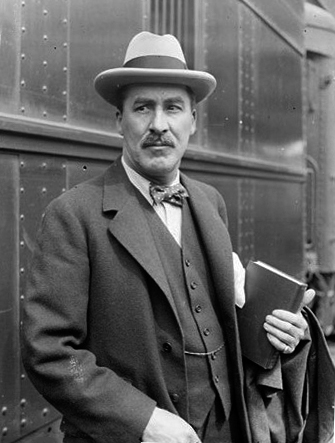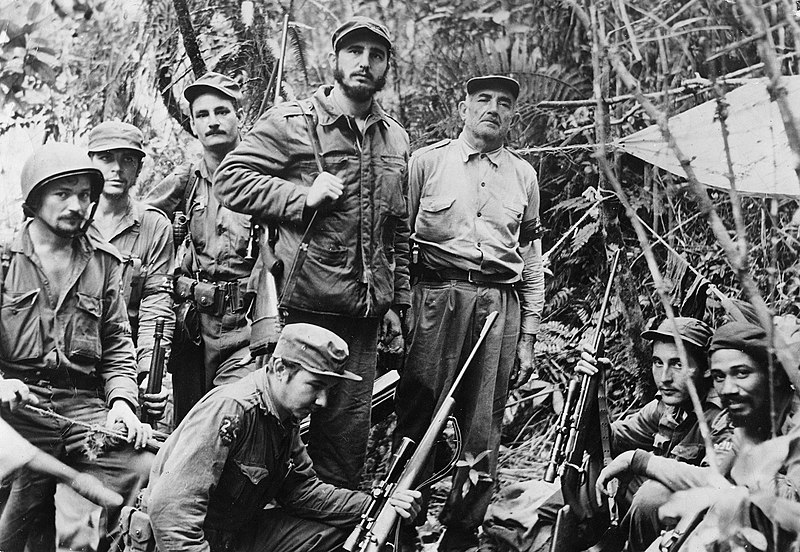February 16th stands as a testament to human progress and pivotal moments across various spheres, from monumental scientific breakthroughs to significant political shifts.
This article explores some of the most notable events that have taken place on this day throughout history, each contributing to the rich tapestry of our collective experience.
Join us on a journey through time, uncovering the lasting impacts of these moments on our world.
February 16th Events in History
1741 – Benjamin Franklin’s General Magazine begins publishing, one of the first magazines in America
Benjamin Franklin, one of the Founding Fathers of the United States, began publishing the General Magazine and Historical Chronicle for all the British Plantations in America in February 1741. This venture marked one of the earliest instances of magazine publishing in America.
The General Magazine was designed to cover a wide range of topics, including history, current events, and science, reflecting Franklin’s diverse interests.
Also Read: February 15 – On this Day in History
Despite its innovative nature, the magazine struggled to compete with Andrew Bradford’s American Magazine, which was launched just three days earlier, and ceased publication after just six issues.
This episode is a notable part of Franklin’s extensive publishing career, which also included the well-known Poor Richard’s Almanack.
1804 – The most daring act of the age: U.S. naval hero Stephen Decatur leads a successful raid into Tripoli harbor to burn the U.S. Navy frigate Philadelphia, which had been captured by pirates
In one of the most daring naval operations of its time, Lieutenant Stephen Decatur led a successful night raid into Tripoli harbor on February 16, 1804, during the First Barbary War.
The mission aimed to destroy the USS Philadelphia, a United States Navy frigate that had been captured by pirates from the Barbary States after running aground.
Also Read: February 17th Events in History
Decatur and his crew of 75 men sailed into the harbor on a captured ketch, the Intrepid, disguised as Maltese sailors. They boarded the Philadelphia, overpowered the pirate crew, and set the ship ablaze, denying its use to the enemy.
This bold action earned Decatur national fame and the praise of Admiral Horatio Nelson, who reportedly called it “the most bold and daring act of the age.”

1852 – Studebaker Brothers wagon company, which would later make automobiles, is established in South Bend, Indiana
The Studebaker Brothers Manufacturing Company was established on February 16, 1852, in South Bend, Indiana, by brothers Henry and Clement Studebaker.
Initially, the company specialized in producing wagons and carriages, quickly gaining a reputation for quality and durability. The Studebaker company played a significant role in supplying the Union Army with vehicles during the American Civil War.
As the automobile industry began to flourish in the early 20th century, Studebaker transitioned into making cars, becoming one of the largest automobile manufacturers in America. The company’s innovation and adaptability are notable chapters in the industrial history of the United States.
1862 – During the American Civil War, General Ulysses S. Grant captures Fort Donelson, Tennessee
The capture of Fort Donelson on February 16, 1862, was a significant Union victory early in the American Civil War, led by General Ulysses S. Grant. Located near the Tennessee-Kentucky border, the fall of Fort Donelson, following a siege and several days of bombardment, marked the first major success for the Union Army.
The victory secured Kentucky for the Union and opened the Cumberland River as an important avenue for the invasion of the South. The surrender of the Confederate garrison at Fort Donelson included over 12,000 troops, which was a considerable blow to the Confederacy.
Grant’s uncompromising demand for an “unconditional and immediate surrender” from the Confederate commander, Simon Bolivar Buckner, earned him the nickname “Unconditional Surrender” Grant and catapulted him to national fame.
1868 – The Benevolent and Protective Order of Elks is organized in New York City
The Benevolent and Protective Order of Elks (BPOE) was officially organized on February 16, 1868, in New York City. Initially founded as a social club by a group of actors and entertainers, the organization soon adopted a more charitable focus.
The Elks are dedicated to fellowship, charity, patriotism, and support for veterans and youth programs across the United States. Over the years, the BPOE has grown into one of the largest fraternal orders in the country, known for its community service and philanthropic efforts, including scholarship programs, drug awareness initiatives, and veterans services.
The formation of the Elks reflects the 19th-century trend of forming fraternal organizations in America, which provided social support and civic engagement opportunities for their members.
1923 – Howard Carter unseals the burial chamber of Pharaoh Tutankhamun
On February 16, 1923, British archaeologist Howard Carter unsealed the burial chamber of Pharaoh Tutankhamun’s tomb in the Valley of the Kings, Egypt. This discovery was one of the most significant archaeological finds of the 20th century.
Tutankhamun’s tomb was remarkably intact, containing a wealth of artifacts that provided invaluable insight into the life and culture of ancient Egypt during the 18th dynasty. The most famous artifact found within the tomb is the Pharaoh’s death mask, a stunning representation of Tutankhamun crafted in gold and precious stones, which has become an icon of ancient Egypt.
The discovery sparked a worldwide fascination with Egyptology and significantly contributed to our understanding of ancient Egyptian civilization.

1937 – Wallace H. Carothers receives a United States patent for nylon, marking the birth of the synthetic fiber industry
On February 16, 1937, Wallace H. Carothers, an American chemist working for DuPont, received a United States patent for nylon, marking a significant breakthrough in the development of synthetic fibers. Nylon was the first synthetic fiber made entirely from petrochemicals.
This invention revolutionized the textile industry and led to the widespread use of synthetic fibers in a variety of applications, including clothing, military supplies, and everyday household items.
Nylon’s strength, elasticity, and resistance to abrasion and chemicals made it an invaluable material, especially during World War II, when it was used extensively in parachutes, tires, ropes, and other military equipment.
1943 – World War II: The Red Army recaptures Kharkov
During World War II, the Red Army recaptured the city of Kharkov from Nazi Germany on February 16, 1943, as part of the broader Soviet counteroffensive following the Battle of Stalingrad. This victory was significant for several reasons.
It marked a turning point on the Eastern Front, with Soviet forces beginning to regain territory previously lost to the Germans.
The battle for Kharkov, however, was fiercely contested, and the city would change hands multiple times before the end of the war. The recapture of Kharkov demonstrated the growing strength and effectiveness of the Red Army and was a blow to German military morale and strategy.
1959 – Fidel Castro becomes Premier of Cuba after dictator Fulgencio Batista was overthrown on January 1
After leading a successful revolution against the dictatorship of Fulgencio Batista, Fidel Castro was sworn in as the Premier of Cuba on February 16, 1959.
Castro’s ascent to power marked the beginning of communist rule in Cuba and had a significant impact on the geopolitical landscape of the Cold War. Under Castro’s leadership, Cuba underwent radical social and economic reforms, including the nationalization of industries and the implementation of socialist policies.
These changes, along with Castro’s alignment with the Soviet Union, led to decades of tension between Cuba and the United States, including the infamous Bay of Pigs invasion and the Cuban Missile Crisis.

1960 – The U.S. Navy submarine USS Triton begins Operation Sandblast, the first underwater circumnavigation of the globe
The USS Triton, a United States Navy nuclear-powered submarine, began Operation Sandblast on February 16, 1960, undertaking the first underwater circumnavigation of the globe.
This mission was not only a demonstration of the capabilities of the U.S. Navy’s nuclear-powered submarine fleet but also served as an important scientific expedition. The Triton followed a path that roughly mirrored the route taken by Ferdinand Magellan’s Spanish expedition of 1519-1522, the first known circumnavigation of the Earth.
The successful completion of Operation Sandblast highlighted the strategic mobility and endurance of nuclear submarines, contributing to military strategy during the Cold War and advancing oceanographic science and navigational techniques.
1968 – In Haleyville, Alabama, the first 9-1-1 emergency telephone system goes into service
On February 16, 1968, the first 9-1-1 emergency telephone system in the United States went into service in Haleyville, Alabama. This system was designed to provide a fast, easy-to-remember number for citizens to call in emergencies, significantly improving the speed and efficiency of emergency response.
The introduction of 9-1-1 marked a pivotal moment in public safety, establishing a standardized approach to emergency services that would eventually be adopted nationwide.
The success of the Haleyville 9-1-1 call demonstrated the system’s viability, leading to its widespread implementation across the United States. Today, 9-1-1 is an essential service, providing immediate access to emergency medical, fire, and law enforcement assistance.
1978 – The first computer bulletin board system is created (CBBS in Chicago, Illinois)
On February 16, 1978, Ward Christensen and Randy Suess, two computer hobbyists in Chicago, Illinois, launched the first computer bulletin board system (CBBS). This system allowed users to dial in via modem to leave messages and share software.
The creation of CBBS marked the beginning of online community forums and was a precursor to the modern internet’s social media platforms and forums.
It revolutionized the way people communicated, shared information, and formed communities based on common interests. CBBS set the stage for the development of more complex online platforms and played a crucial role in the evolution of digital communication.
1985 – Hezbollah is founded
Hezbollah, a Shia Islamist militant group and political party based in Lebanon, was founded on February 16, 1985. Emerging in the wake of the Israeli invasion of Lebanon in 1982, Hezbollah was initially formed to resist Israeli occupation.
It has since evolved into a significant political and military force within Lebanon, involved in social services, political processes, and armed conflict.
Hezbollah’s establishment marked a significant moment in the Middle Eastern geopolitical landscape, contributing to the complex tapestry of politics and conflict in the region. The group has been a key player in Lebanese politics and has been involved in various conflicts, including the Syrian Civil War.
1987 – The trial of John Demjanjuk, accused of being a Nazi guard dubbed “Ivan the Terrible” in Treblinka extermination camp, starts in Jerusalem
The trial of John Demjanjuk began on February 16, 1987, in Jerusalem, Israel. Demjanjuk, a Ukrainian-born auto worker from Cleveland, was accused of being “Ivan the Terrible,” a notoriously brutal guard at the Treblinka extermination camp during World War II.
His trial was one of the last major Nazi war criminal trials and drew international attention, highlighting the ongoing pursuit of justice decades after the Holocaust.
The proceedings raised significant legal and ethical questions regarding identity, evidence, and the statute of limitations on war crimes. Demjanjuk’s trial underscored the complexities of historical memory and the importance of accountability for atrocities.
1998 – China Airlines Flight 676 crashes into a residential area near Chiang Kai-shek International Airport, killing all 196 on board and seven people on the ground
On February 16, 1998, China Airlines Flight 676, en route from Ngurah Rai International Airport in Bali, Indonesia, to Chiang Kai-shek International Airport (now Taoyuan International Airport) in Taiwan, crashed into a residential area near the airport during its approach in poor weather conditions.
All 196 people on board and seven people on the ground were killed. The accident raised serious questions about aviation safety, particularly regarding approach and landing procedures in adverse weather conditions.
The crash of Flight 676 led to increased scrutiny of airline safety practices and the implementation of more rigorous training and safety measures to prevent similar tragedies.
2005 – The National Hockey League cancels the entire 2004-2005 regular season and playoffs
On February 16, 2005, the National Hockey League (NHL) announced the cancellation of the entire 2004-2005 season due to a labor dispute between the league and its players’ association. This was the first time a major professional sports league in North America lost an entire season to a labor dispute.
The central issue was the league’s demand for a salary cap, which the players’ association initially resisted. The cancellation disappointed millions of hockey fans and had significant economic impacts on businesses reliant on the NHL season.
The resolution eventually led to the adoption of a salary cap, which aimed to ensure long-term economic stability and competitive balance within the league.
2006 – The last Mobile army surgical hospital (MASH) is decommissioned by the United States Army
The United States Army decommissioned its last Mobile Army Surgical Hospital (MASH) on February 16, 2006. MASH units were crucial during the Korean and Vietnam Wars, providing rapid, front-line medical care to wounded soldiers and significantly improving survival rates.
These units were highly mobile and could be moved close to the combat zone, reducing the time between injury and surgical treatment. The decommissioning of the last MASH unit marked the end of an era and the transition to the use of Combat Support Hospitals (CSH) and Forward Surgical Teams (FST), which offer more advanced and versatile medical capabilities in modern warfare.
2011 – The Arab Spring: Bahraini uprising begins with a ‘Day of Rage’
On February 16, 2011, the Bahraini uprising began as part of the broader wave of protests across the Arab world, known as the Arab Spring. The uprising started with a ‘Day of Rage’ called by activists, demanding political reforms and greater freedoms in the small Gulf kingdom.
The protests were met with a significant crackdown by the Bahraini government, with assistance from neighboring Gulf Cooperation Council countries.
The Bahraini uprising highlighted the tensions between the Shiite majority population and the Sunni monarchy and had lasting implications for the region’s political landscape, human rights, and international relations.
2012 – The European Space Agency conducts the first launch of the Vega rocket from French Guiana
The European Space Agency (ESA) conducted the first launch of the Vega rocket from French Guiana on February 16, 2012. Vega is designed to carry small to medium-sized payloads, such as satellites, into orbit.
This successful inaugural flight marked a significant milestone for Europe’s space capabilities, offering a reliable and versatile launch option for various scientific and commercial missions. The development of Vega represented a collaborative effort among several European countries and industries, reinforcing Europe’s position in the competitive space launch market.
2013 – A meteor explodes over Russia’s Ural Mountains with an energy of about 500 kilotons of TNT, injuring over 1,000 people
On February 16, 2013, a meteor exploded in the atmosphere over Russia’s Ural Mountains near the city of Chelyabinsk, releasing an estimated energy of about 500 kilotons of TNT. The explosion caused a powerful shockwave that damaged thousands of buildings and injured over 1,000 people, mostly due to broken glass.
The event was one of the most significant recorded meteor impacts in recent history and highlighted the potential danger posed by near-Earth objects. The Chelyabinsk meteor prompted increased global interest in asteroid detection and mitigation strategies to protect Earth from potential future impacts.
